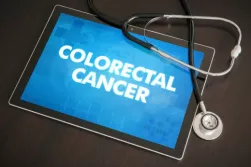SAVANNAH, GA - Johnson & Johnson recently announced positive results from the Phase 2/3 Vibrance-MG study of nipocalimab in anti-AChR positive adolescents (aged 12 – 17 years) living with generalized myasthenia gravis (gMG). Study participants who were treated with nipocalimab plus standard of care (SOC) achieved sustained disease control as measured by the primary endpoint of immunoglobulin G (IgG) reduction from baseline over 24 weeks, and secondary endpoints of improvement in MG-ADLand QMG scores. These Phase 2/3 data will be featured in an oral presentation (Abstract #MG100) at the Myasthenia Gravis Foundation of America (MGFA) Scientific Session during the American Association of Neuromuscular & Electrodiagnostic Medicine (AANEM) Annual Meeting, where Johnson & Johnson will present 25 abstracts.
"Findings from the Vibrance-MG study underscore the potential of this investigational therapy for young individuals aged 12 – 17 living with gMG. Results show a significant reduction in IgG of approximately 70% in adolescents and a clinical benefit that is consistent with the Vivacity-MG3 study in adults," said Jonathan Strober, M.D., Director of Clinical Services for Child Neurology and Director of the Muscular Dystrophy Clinic at UCSF Benioff Children's Hospital.d "It is encouraging to see these positive results as there are currently no approved advanced treatment options for this adolescent population in the United States."
About 10% of new cases of myasthenia gravis are diagnosed in adolescents (12 – 17 years of age) and the severity of gMG in pediatric patients is heightened with 43% having experienced over five hospitalizations in their lifetime, 46% having at least one intensive care unit stay and 68% having periods of exacerbated disease.
Treatment with nipocalimab plus SOC met the study's primary endpoint of reduction in total serum IgG (-69%), and the two secondary endpoints of MG-ADL and QMG, which are measures of disease activity. Four of five patients achieved minimum symptom expression (MG-ADL score 0-1) by the end of their treatment phase. Nipocalimab was well-tolerated over the six-month period, similar to tolerability seen in adult participants in the Vivacity-MG3 study. There were no serious adverse events and no discontinuations due to an adverse event.
Presented for the first time, these open-label Phase 2/3 results in adolescents are consistent with findings from the pivotal study of nipocalimab in adult patients with gMG. Nipocalimab when added to SOC is the first FcRn blocker to demonstrate sustained disease control in a registrational trial as measured by improvement in MG-ADL over placebo plus SOC over a period of six months of consistent dosing (Q2 week) among adults living with gMG.
"The Vibrance-MG data add to the expanding clinical profile of nipocalimab and highlight its potential for adolescents living with gMG who are in need of new treatments," said Sindhu Ramchandren, M.D., Executive Medical Director, Neuroscience, Johnson & Johnson Innovative Medicine. "We are committed to developing innovations for autoantibody-driven neurological diseases, like gMG, with the aim of transforming the lives of people living with these conditions."
Earlier this year, Johnson & Johnson announced the submission of applications to the U.S. Food and Drug Administration (FDA) and the European Medicines Agency (EMA) seeking approval for nipocalimab for the treatment of gMG.



